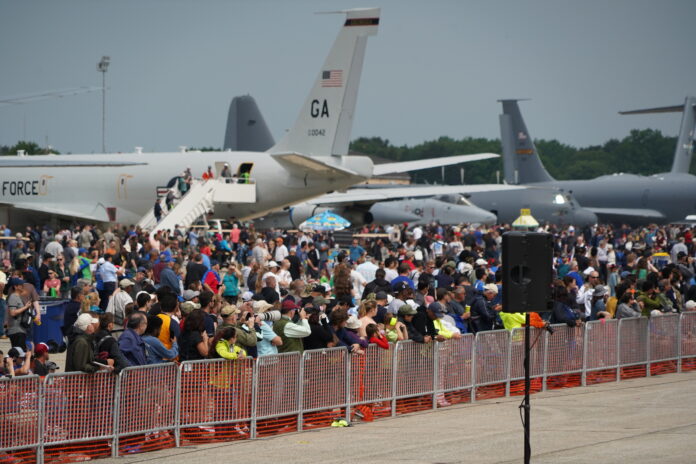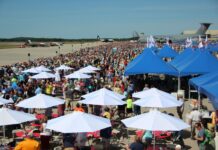At most air shows, when a performer arrives, we receive an “All-Access” pass that gives us unfettered access to the entire airport. It is something we expect, and — frankly — take for granted. But occasionally, there are air shows where ramp access is restricted and we are not able to take our car directly to our airplanes. And, when that happens, there is grumbling in the briefing.
I just returned home from flying for nearly six weeks as part of the D-Day and Berlin Airlift commemorations. The access that we enjoy as general aviation pilots to airports in America — like our “All Access” credentials at air shows — is a wonderful thing. But flying extensively abroad and witnessing first-hand how difficult flying GA airplanes becomes when access is restricted has caused me to look more closely at what is happening here. And looking more closely, we are losing access to our airports.
Access is comprised of many things. It is having airports that are conveniently located. It is having airports that are open when we need to use them. It is not having to pay exorbitant fees to use an airport that was built with our fuel tax dollars. It is being able to drive our car to our airplane on the ramp to load or unload our baggage. It is having an air traffic control system that is user friendly and cost effective. And finally, it is access to airspace that allows efficient routing between airports.
Let me share a few first hand examples of what aviation outside America looks like and what it could look like here if we aren’t careful.
During our European travels, we arrived one day at an airport to give a VIP ride in a C-47. This was a small GA airport with one 6,000-foot runway, one FBO and a control tower. The landing and handling fees for those two operations were in excess of $1,500. The airport is open from 9 a.m. to 6 p.m. and operations are not permitted when the tower is closed. Takeoffs or landings after hours are possible, but cost $250 per hour. You can bring a personal vehicle on the ramp at this airport, but it requires a $150 permit.
Air traffic control in Europe is all privatized and it is a fee based on weight, distance traveled and in what country’s airspace the flight occurs. Searching on line for a simple rate calculator is impossible; all that can be found is a multi-page .pdf with complex algebraic formulas. Those bills have not arrived yet, but we have been advised that IFR flight fees could be $500-$1000 each. Not only is IFR flight expensive, but it is difficult. Use of a handler is nearly essential to negotiate routes acceptable to ATC. And the routes are not the GPS direct that we are so accustomed to here. Circuitous routing added over 150 nautical miles to one 400 nm leg as compared to what it would have been if we had flown direct.
“But that is Europe; it will never happen here,” some might say. Well, it is happening here.
Airports take a lot of land, and they are typically built to be conveniently located. But, as cities sprawl and engulf the airport, property values rise and neighbors complain about the noise. Santa Monica airport and Meigs Field are just two examples of convenient airports that are gone or going away. These are both examples of facilities where millions of our aviation fuel tax dollars were invested and a local government restricted access or removed the airport entirely. There are numerous other examples. When this happens, there are faint cries from the aviation community, but they fall on deaf ears.
ATC privatization was a very real possibility just over a year ago. It was narrowly defeated, but those interests who desire to reduce airspace congestion by limiting access to GA will try again.
There has also been a huge consolidation occurring in the fixed base operator (FBO) industry that complicates access issues. Major chains are buying up businesses and competition is being reduced. Fly into a major metropolitan airport where the FBO has a monopoly or near monopoly and ramp fees can exceed $1,000 for a medium size business jet. But these big chain FBOs are now focusing on smaller airports where more of us in the air show industry conduct our business. Operators of WWII aircraft with comparatively high gross weights could soon see fees similar to those at major metropolitan airports. I was speaking recently with a corporate flight department manager whose hangar required taxiing across the FBO ramp. The FBO billed him $1,000 each time a jet departed from or returned to their private corporate hangar.
And finally, there is airspace access. Already, we have air shows that have been denied access to the airspace over their airport to hold an air show because of sporting event TFRs. Members of our industry are prevented from flying advertising missions over venues under the guise of security. These access restrictions have nothing to do with security, and everything to do with protecting the revenue for the politically well-connected. A recent helicopter crash sparked a call to restrict airspace over New York City. Noise restrictions are becoming more numerous and onerous.
Spending six weeks and nearly 100 hours flying outside America provided a different perspective and, I would argue, a glimpse into the future of what general aviation in America will look like unless we take affirmative action to change the current course of events.
I brought back many experiences and memories of my six-week aviation tour of western Europe, but I also took home a lesson that I want to share with my ICAS colleagues. Those of us who are privileged to perform at air shows are also widely recognized to be the most visible ambassadors of general aviation. In that role and to protect the aviation freedom we have sometimes taken for granted, it’s important that we recognize now – while there is still time to take action – that our freedom as aviators is under siege and likely to be limited during our lifetime if we don’t take forceful action to fight the types of restrictions and limitations that are already in place in Europe and much of the rest of the world.
In my view, aviation is the ultimate expression of freedom. And air shows are the most efficient way to share that message with the public. We in the industry enjoy a large stage and we fight far above our weight class in political circles. It is time to start grumbling outside the briefing room.








